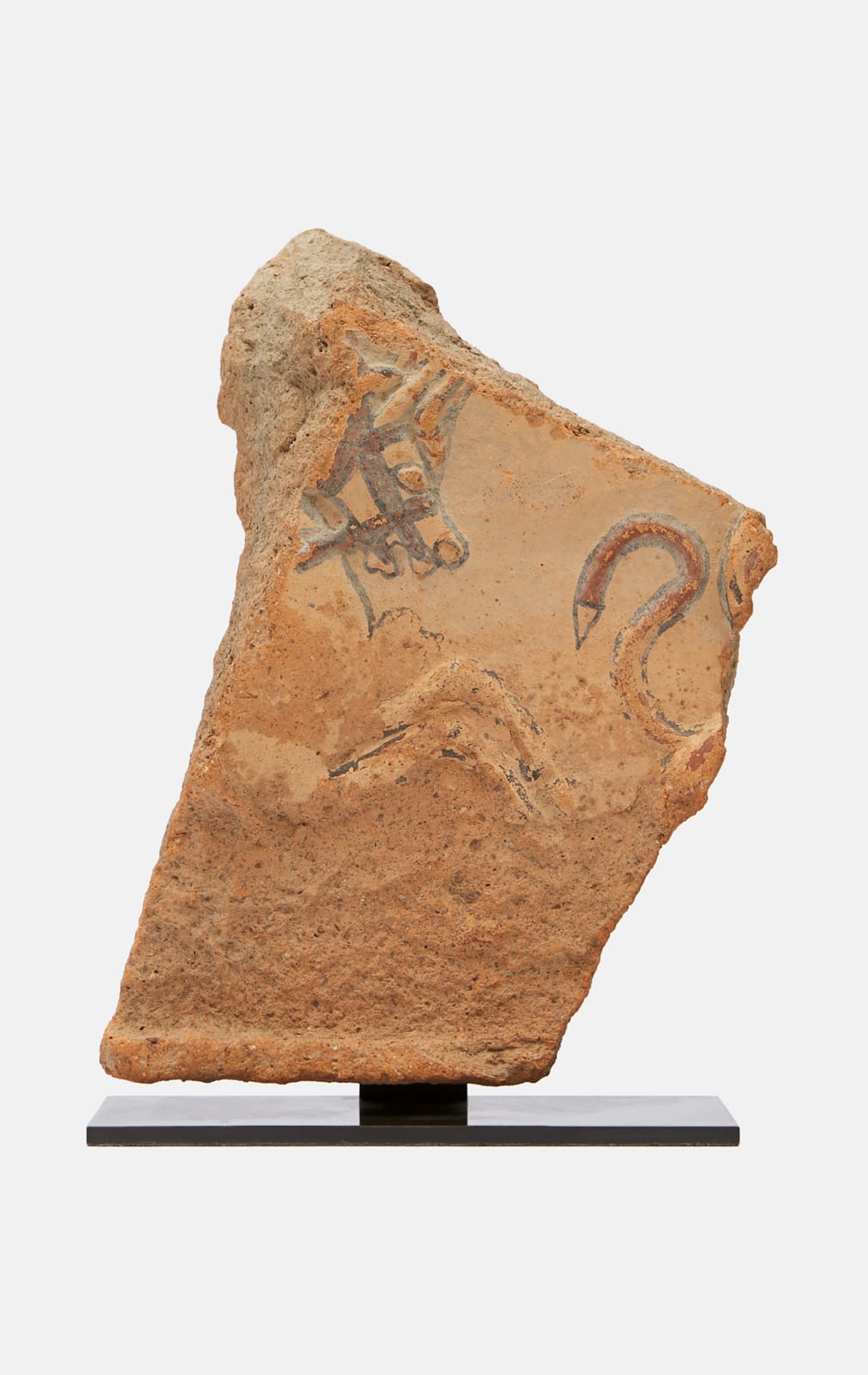-
Artworks

Anon
Anatolian Temple Frieze with Horse & Griffin, Circa 525 BCpainted terracottaExcluding stand: 8 5/8 x 6 1/4 x 1 5/8 in. | 22 x 16 x 4 cmDuring the 6th century BCE Anatolia fell under Persian rule and became part of the Achaemenid Empire. The change brought about innovations in art and architecture and stone temples began...During the 6th century BCE Anatolia fell under Persian rule and became part of the Achaemenid Empire. The change brought about innovations in art and architecture and stone temples began to replace the older timber and adobe structures. The Persian influence also began to emerge in the pottery being produced in the region. Depictions of animals, human figures, lotuses, rosettes and palmettes all gained in popularity.
The present example was part of a terracotta frieze that would have adorned an Anatolian temple in Düver, located in the region of Lydia, Western Anatolia. The animals on this work are painted in rich red and black pigments, with a galloping horse chasing a griffin depicted in shallow relief.15of 15